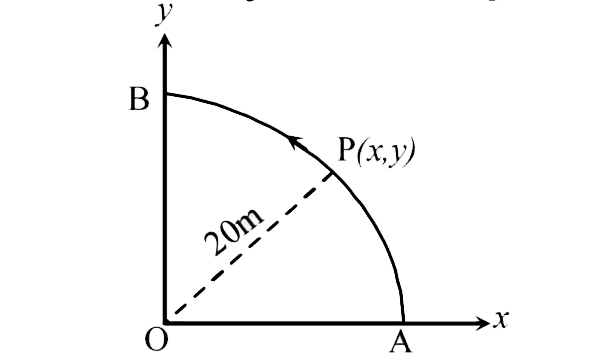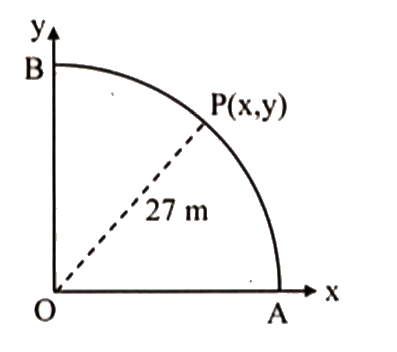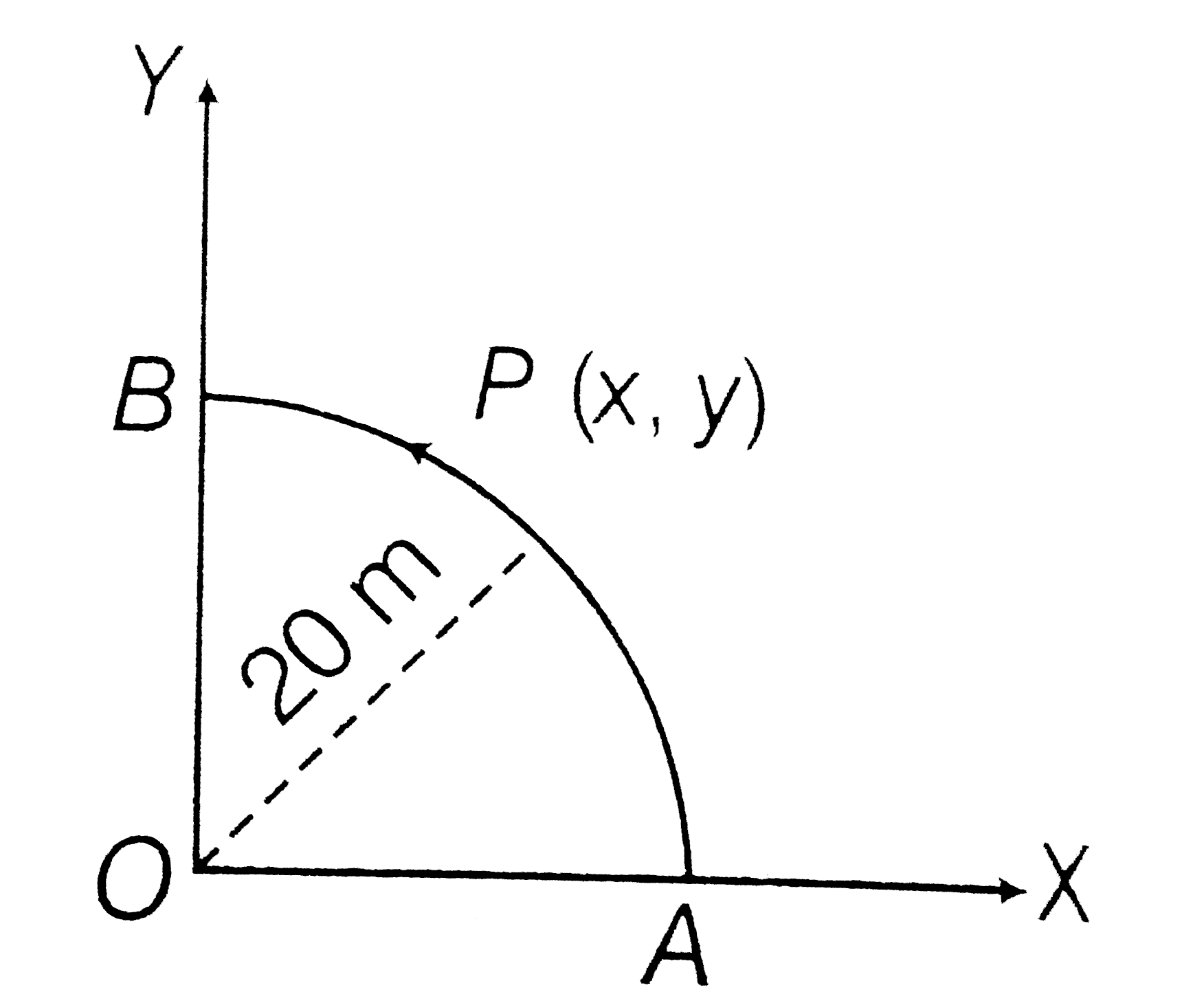A point P moves in counter-clockwise direction on a circular path as shown in the figure. The movement of 'P' is such that it sweeps out a length s=t3+5, where s is in metres and t is in seconds. The radius of the path is 20 m. The acceleration of 'P' when t =2 s is nearly.

13m/s2
12m/s2
7.2ms2
14m/s2
The correct Answer is:D
s=t3+5
⇒ velocity , v=dsdt=3t2
Tangential acceleration at=dvdt=6t
Radial acceleration ac=v2R=9t4R
At t=2s, at=6×2=12m/s2
ac=9×1620=7.2m/s2
∴ Resultant acceleration
=√a2t+a2c=√(12)2+(7.2)2=√144+51.84
=√195.84=14m/s2
Related Playlists
- BOOK - DISHA PUBLICATIONCHAPTER - MOTION IN A PLANE EXERCISE - Exercise -1 : CONCEPT BUILDER (TOPICWISE)60videos
MOTION IN A PLANE
- BOOK - DISHA PUBLICATIONCHAPTER - MECHANICAL PROPERTIES OF FLUIDS EXERCISE - EXERCISE-2 CONCEPT APPLICATOR24videos
MECHANICAL PROPERTIES OF FLUIDS
- BOOK - DISHA PUBLICATIONCHAPTER - MOTION IN A STRAIGHT LINEEXERCISE - Exercise-230videos
MOTION IN A STRAIGHT LINE
Similar Practice Problems
- Question 1 - Select One
A point P moves in counter clockwise direction on a circular path as shown in the figure. The movement of 'P' is such that it sweeps out a length s=t2+5, wheres is in metres and t is in seconds. The radius of the path is 20m. The acceleration of 'P' when t=5√310 seconds is nearly:
 A2m/s2B1.5m/s2C2.5m/s2D3m/s2
A2m/s2B1.5m/s2C2.5m/s2D3m/s2 - Question 1 - Select One
A point p moves in counter - clockwise direction on a circular path as shown in the figure . The movement of 'p' is such that it sweeps out in the figure . The movement of 'p' is such that it sweeps out a length s=t3+5 , where s is in metres and t is in seconds . The radius of the path is 20m . The acceleration of 'P' when t=2s is nearly .
 A13m/s2B12m/s2C7.2m/s2D14m/s2
A13m/s2B12m/s2C7.2m/s2D14m/s2 - Question 1 - Select One
The displacement of a particle moving in a straight line, is given by s=2t2+2t+4 where s is in metres and t in seconds. The acceleration of the particle is.
A2m/s2B4m/s2C6m/s2D8m/s2
Similar Questions
A point P moves in a counter-clockwise direction on a circular path as shown in the figure. The movement of P is such that it sweeps out a length s=t3+5 where s is in the metre and t is in seconds. The radius of the path is 27 m. The acceleration of P when t= 3 s is _________ m/s2. (Take √13=3.6)
 View Solution
View SolutionA point P moves in a counter-clockwise direction on a circular path as shown in the figure. The movement of P is such that it sweeps out a length s=t3+5 where s is in the metre and t is in seconds. The radius of the path is 27 m. The acceleration of P when t= 3 s is _________ m/s2. (Take √13=3.6)
 View Solution
View SolutionA point P moves in counter-clockwise direction on figure. The movement of P is such that it sweeps out a length s=t3+5, where s is in metre and t is in second. The radius of the pathh is 20 m. the acceleration of P when t=2s is nearly
 View Solution
View SolutionA point p moves in counter - clockwise direction on a circular path as shown in the figure . The movement of 'p' is such that it sweeps out in the figure . The movement of 'p' is such that it sweeps out a length s=t3+5 , where s is in metres and t is in seconds . The radius of the path is 20m . The acceleration of 'P' when t=2s is nearly .
 View Solution
View SolutionA point P moves in a counter-clockwise direction on a circular path as shown in the figure. The movement of P is such that it sweeps out a length s=t3+5 where s is in the metre and t is in seconds. The radius of the path is 27 m. The acceleration of P when t= 3 s is _________ m/s2. (Take √13=3.6)
 View Solution
View SolutionThe displacement of a particle is represented by the equation, s=3t3=7t2+4t+8 where (s) is in metres and (t) in seconds . The acceleration of the particle at t=1s is.
View SolutionA car is moving in such a ways that the distance it covers , is given by the equations s=4t2+3t, where s, is in meters and t is in seconds . What would be the velocity and the accelerations of the car at time t=20 seconds?
View Solution

